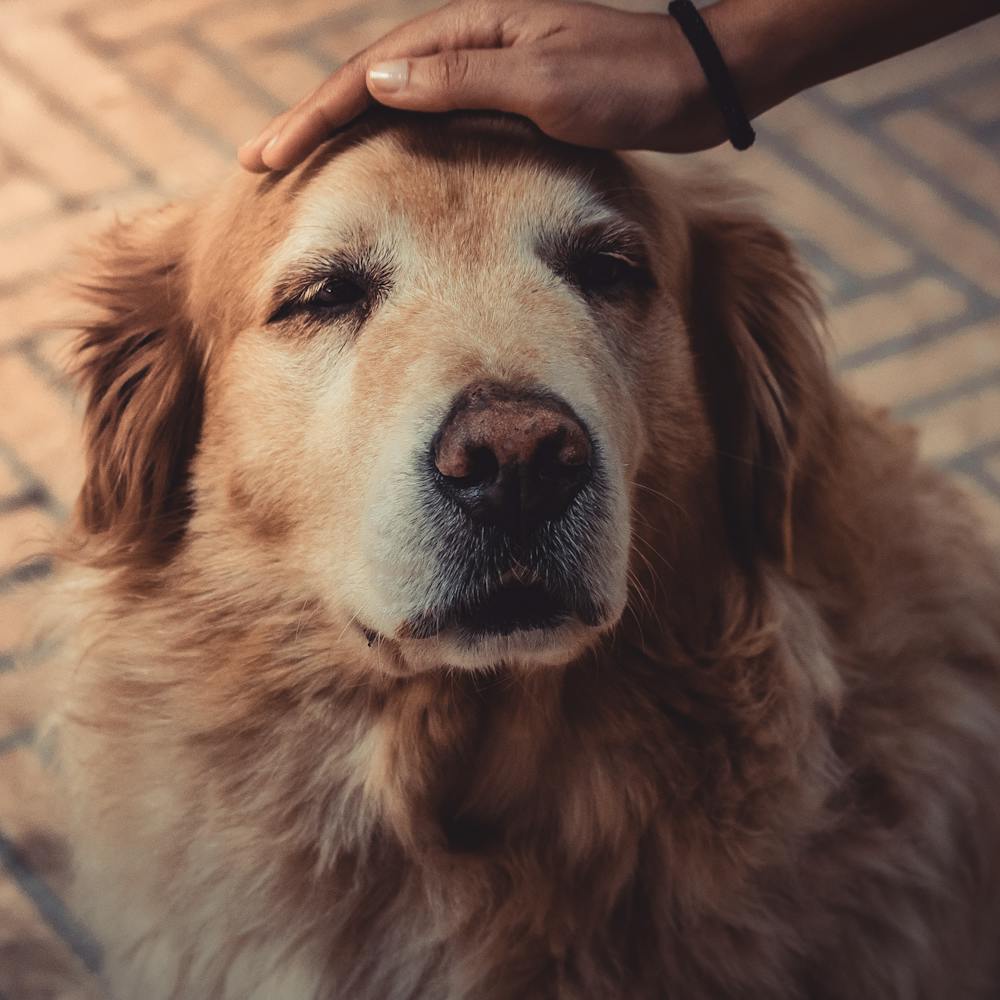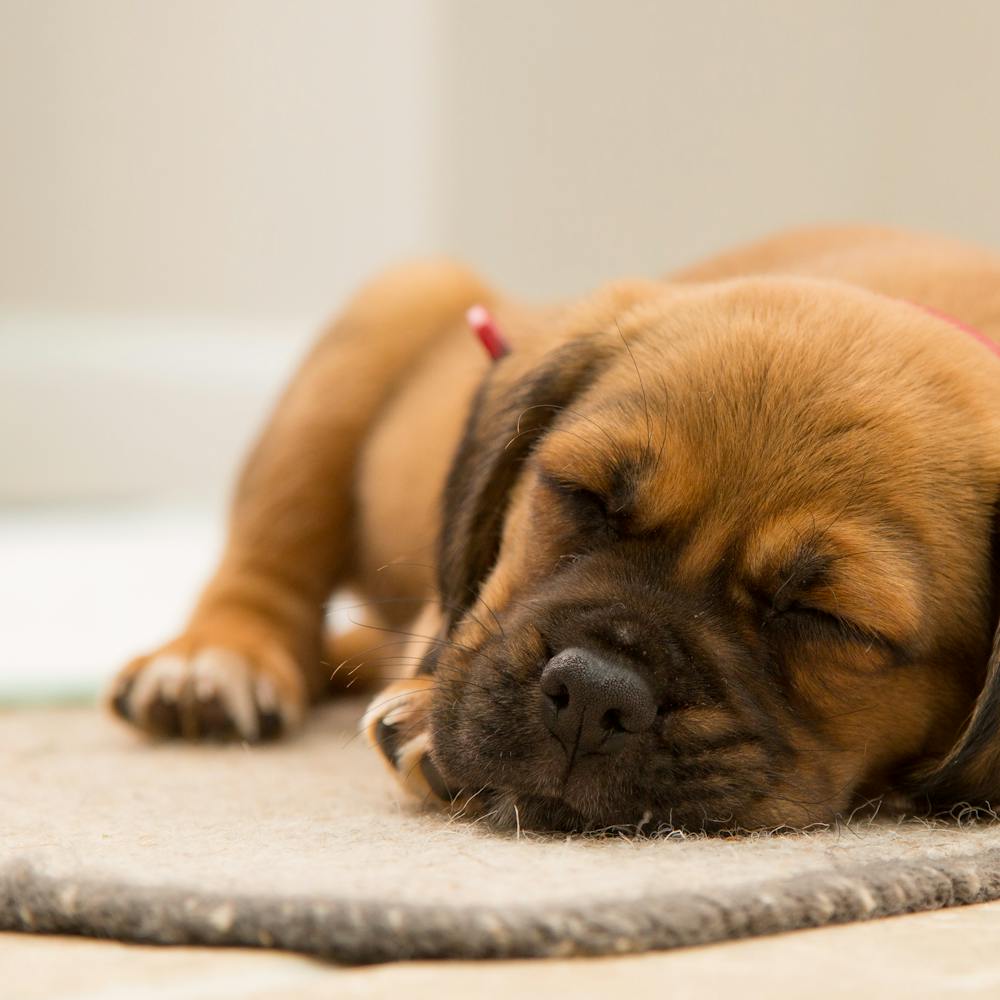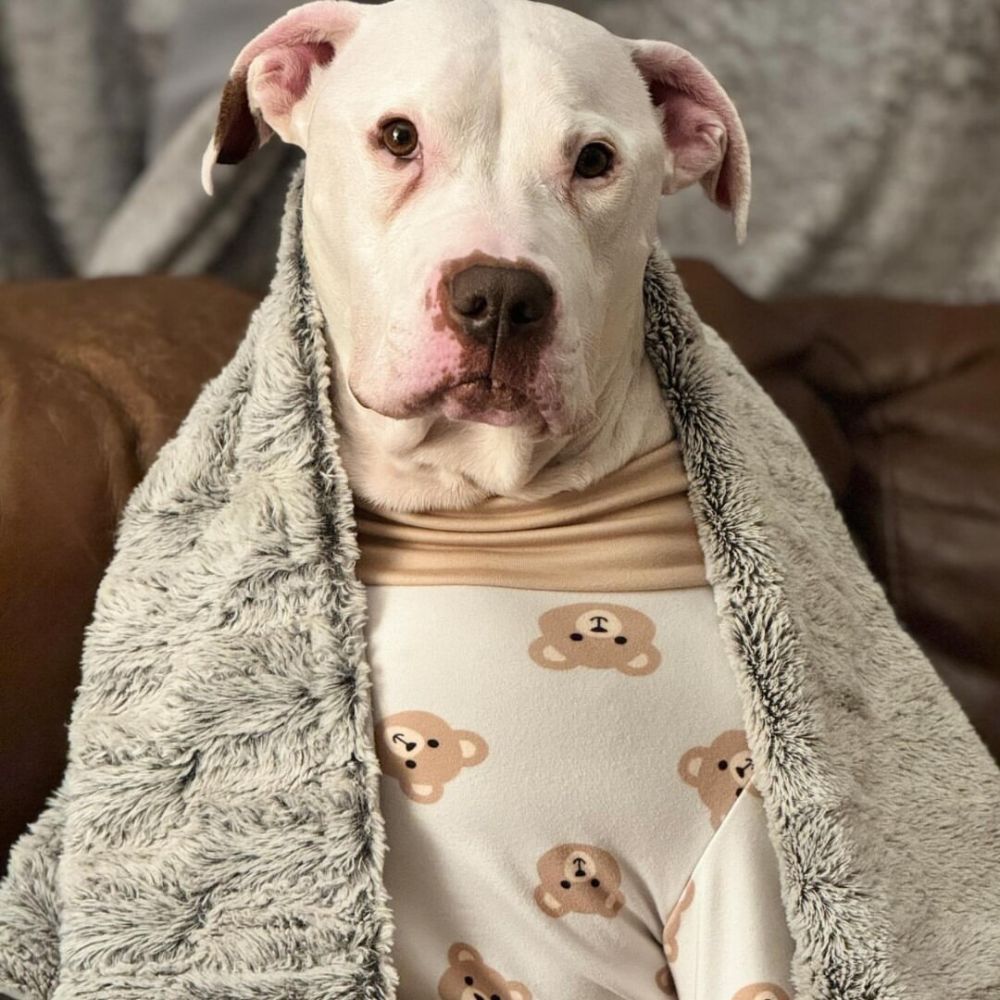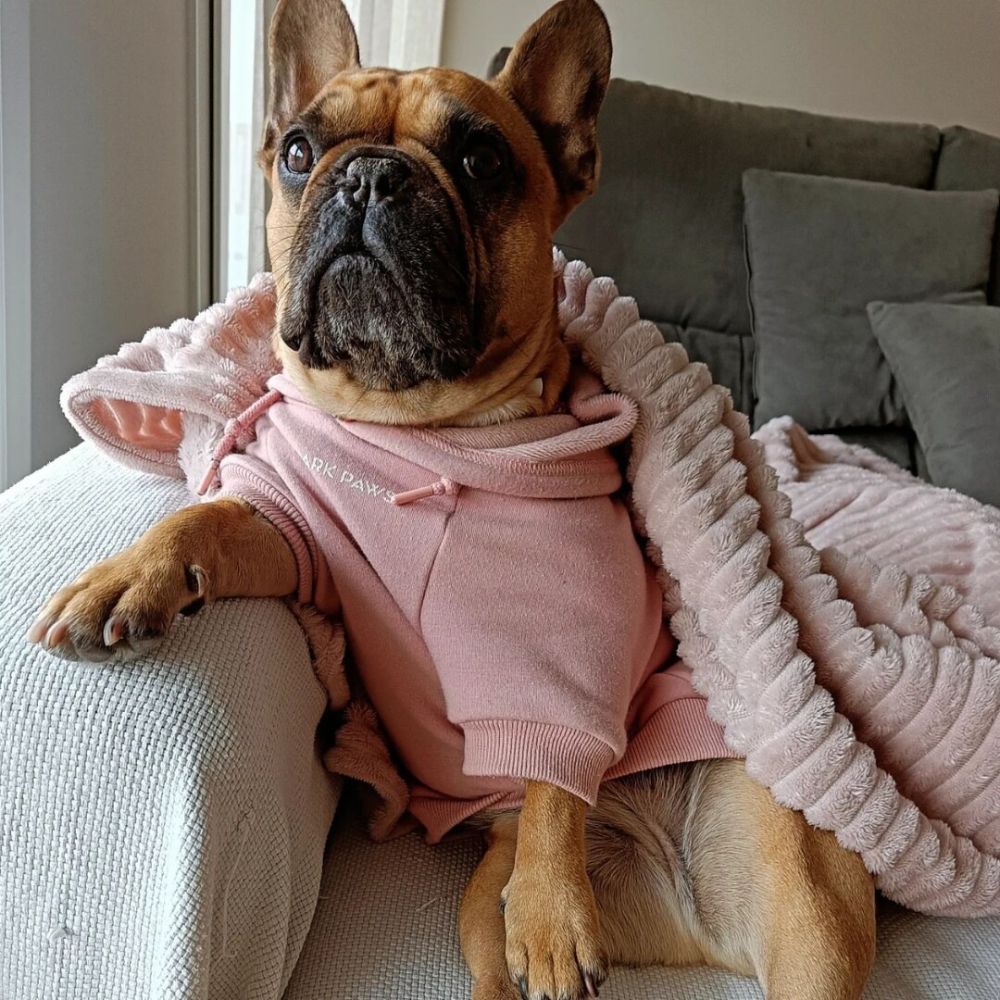What Do I Do When My Dog Is Anxious at Night?
Is your dog anxious at night? Sometimes we notice that dogs with anxiety can suddenly seem to deteriorate as it gets later.
This can be distressing for owners, and make it more difficult for a dog to calm down for bed or to complete their bedtime routine. Why do dogs act this way and what can you do to help your furry friend calm down and feel secure?
Signs of Anxiety
The first step would be telling if your dog is truly anxious or if they’re just a bit restless or disturbed.
Signs that a dog is suffering from anxiety can include -
- Frequent urination or peeing inside after being housetrained.
- Excessive licking, scratching, and gnawing.
- Shivering or curling up in a ball.
- Startling easily or running away.
- Lack of appetite.
- Difficulty settling down.
- Excessive barking, howling, or yawning.
Sometimes this can just be a one-time thing if something has upset your dog. However, if it goes on for more than a few nights or a few weeks then there may be a bigger problem.
But if you’ve been wondering why is my dog acting weird, persistent anxiety at night may be a sign of a deeper emotional or physical issue that needs addressing.
It might not be an issue that happens at night. Sometimes stressful problems throughout the day can only manifest or become worse at night time when the dog has less distraction from the problem.
Causes of Anxiety at Night
Disruption of Routine
Much like humans, an anxious dog can be easily upset by a change in routine. This can involve big changes - such as a new house, travel, a new dog, or a new baby. Or small changes - such as an owner going out when they don’t normally or some guests coming over.
This type of anxiety will normally resolve itself as the dog gets used to the new change, or when things go back to the way that they were.
You can help by trying to keep things as ‘normal’ as possible, such as making sure the dog still has their own bed in the new area, or that your dog’s routine is still as closely observed as possible (E.g they are taken out to potty at the same time, or an owner leads them to the bed at the same time, etc.)

Separation Anxiety
Similar to a disrupted routine, most dogs like to fall asleep and wind down when they feel secure. This normally means knowing that their humans are nearby, however, sometimes a restless dog may get separation anxiety if their owner is sleeping in a different room.
Separation anxiety is especially common in rescue dogs that have been abandoned or abused, or in dogs whose owners may have left or passed away suddenly.
Some experts recommend leaving your dog with a sitter, some clothes that smell like you, or their favorite treats. In some extreme cases, where the dog starts getting separation anxiety as soon as you start getting ready - start getting ready to leave (putting on coats, shoes, etc,) and then don’t leave. It will teach the dog that these things aren’t so scary.[1]
You could also try leaving the TV or an audiobook on while you’re not home, as the dog may find the sound of human voices soothing. This largely depends on the dog though.
Not Enough Stimulation During the Day
Dogs need a lot of exercise. The average recommended time falls between 1 - 2 hours every day (with less for certain breeds).
If your dog is not getting enough exercise, or if they’re bored, then this can lead to frustration and canine anxiety. This is especially true for dogs that are home alone all day or who are trapped in homes without gardens or play areas.
When nighttime rolls around, the dog may still have a lot of pent-up energy and may want to spend it with their owners. Other times it can manifest in canine anxiety, especially if they don’t have something to distract them.
Take the time to make sure they’re getting the exercise and mental stimulation that they need, such as with an early evening walk. You can also make sure they’re entertained by providing soothing toys such as chew toys.
Health Issues
Sometimes the sudden onset of a dog’s anxiety can indicate that something is not quite right with your dog’s health.
A dog that is in pain may struggle to settle down and fall asleep. This may be obvious if you know that your dog suffers from a condition like arthritis or if they recently had surgery, but sometimes it can be something unexpected such as dental pain or an upset stomach.
A dog in pain may lie down in an odd position, or lie down and then quickly get up again when they can’t get comfortable. In most cases, the dog may also avoid contact, cry or whine, or lick/scratch at the area affecting them. [2]
In some cases, a dog with an infection or fever may seem tired and lethargic but also struggle to settle down. Dog owners should check for any other behavioral changes in a dog that’s suddenly become restless.
Older Dogs
Older dogs may be more likely to suffer from pain and illness as listed above, but some senior dogs may also suffer from Canine Cognitive Dysfunction (CCD).
This is a behavioral disorder that can sometimes develop in senior dogs. It's akin to older humans suffering from dementia, and there’s currently no cure for it, but early intervention with medical support, diet changes, and enrichment, can sometimes slow or ease the progression.
According to Dr. Cohen or Cornell University, other symptoms can include[3] -
- Disorientation.
- Occasionally struggling to recognize familiar faces or spaces.
- Going to the bathroom indoors, despite being potty trained.
- Forgetting old commands or struggling to learn newer ones.
- Sleeping more in the day and less at night.
- New or increased anxieties and phobias...
Like humans with dementia, this form of senior dog anxiety may also result in ‘sundowner syndrome’, which is when a dog that is normally calm and friendly may suddenly become very anxious, agitated, or aggressive as night falls.

Helping and Soothing
Your canine friend’s anxiety may be a short-term or a long-term thing. Either way, there are a few things you can do to help soothe them and let them settle down a bit easier.
The first thing should be to take the dog to the vet, especially if the anxiety has suddenly appeared out of nowhere and there is no obvious reason. This can rule out pain or sickness as a cause and let you focus on their emotional well-being.
1. Keep a Good Routine
Consistency is key in helping an anxious dog. Having a good nighttime routine can let a dog subconsciously know that now is a good time to start relaxing and winding down for bed.
Try and make this a positive experience, such as including some cuddles or treats as part of the process. If you have changed locations or are unavailable, continuing to do the routine (or having your sitter do the routine) will provide a sense of normalcy.
Keeping familiar objects, such as a comfy bed, known and liked toys or blankets, or some clothes that have your scent on them can also help a dog feel safe and secure.
A good routine also includes more consistent exercise during the day. Making sure that your dog has frequent walks that meet their personal needs can go a long way to combating pent-up anxiety and frustration in the evenings.
It's also recommended to make sure your dogs have an opportunity to use the bathroom just before they go to their crate/bed, especially in older dogs, to make sure that their restlessness is not just a full bladder.
2. Crate Training
Confining a dog to a crate may seem counter-intuitive, but many dogs feel safer and more relaxed when they have their own space in a crate, as well as the security being in a smaller environment provides.
Noted Pet Behaviorist Petrina Firth recommends crate training to relieve anxiety - but recognizes that it is not a magical ‘fix-all’ or the best solution for every dog.[4]
She recommends that crate training be implemented from a young age and that it shouldn’t be rushed. Locking a panicking dog in will cause the crate to become a source of anxiety, rather than an aid.
Options to make crate training more appealing include making the crate as positive and cozy as possible, and gently increasing the amount of time spent inside, as well as the time spent alone.
3. Create a Cozy and Comfortable Rest Area
Whether your dog sleeps in a kennel, a crate, or on a dog bed, making sure that their environment is conducive to a good night’s sleep is important.
If your dog prefers snuggling up on the couch, consider making that spot extra cozy and secure. Using soft, pet-proof couch covers for dogs can help create a calming space they’ll love, while also protecting your furniture from fur and accidents.
Their sleeping area should be at a comfortable temperature, be clean, and should have some kind of soft material or cushion to bed in.
In the same way that being wrapped in a blanket is soothing to humans, many dogs benefit from having something wrapped around them. If you are concerned about blankets getting chewed or muddied, then providing the dog with a coat or pajamas may also help them to stay calm.
The best dog clothes for anxiety are ones that are somewhat snug-fitting and encompassing, such as dog pajamas, or ones that cover the dog’s ears, such as protective earmuffs or hoods.
4. Medication
While the above options are the better choice, if you feel you have exhausted your other options then it may be time to turn to a vet for medical help regarding your dog’s anxiety. This may be necessary for an older dog that suffers from CCD, as conventional methods might not help much.
There should be a variety of options, including conventional anti-anxiety medication for chronic cases, as well as some more mild sedatives for isolated incidents.
Always clear any medication or alternative medicines with your vet before giving them to your dogs, as both medicines and essential oils can contain ingredients that are unsafe for dogs, or that are present in unsafe amounts.

Conclusion
Most dogs will suffer from some kind of nighttime anxiety in their lifetime. This can be from a short-term stressor or a chronic condition.
Common causes of anxiety at night involve pain, illness, a lack of exercise or stimulation during the day, separation anxiety, disruption of routine, sleeping in a new location, or a change in their life such as the death of an owner or a new baby or dog in the house.
As your dog ages, these problems may increase, or they may begin to suffer from Canine Cognitive Dysfunction (CCD), a degenerative disease akin to human dementia, which can cause them to become anxious and confused, especially at night.
You can help your dog by trying to keep their routine and environment as cozy and consistent as possible, allowing them to go potty before bed, training them to sleep in a crate, reassuring them, and providing enough stimulation during the day.
Your first step for chronic anxiety should be taking them for a checkup to remove the possibility of any pain or illness, as well as getting some advice.
It has been shown that dogs who chronically suffer from anxiety tend to benefit from being swaddled in blankets or provided with pajamas and coats. This ‘wrapping-up’ sensation helps a dog to calm itself and stay asleep for longer.
Here at Sparkpaws, we offer a variety of comfortable and stylish dog pajama onesies to make sure your furry friend enjoys a good night’s rest. We also have a number of anxiety-calming earmuff protectors for dogs who are easily startled or are traveling somewhere new.
Whatever you choose, we wish you and your canine companions a good relaxing night together.
Ext Links
[2] https://animalemergencyservice.com.au



